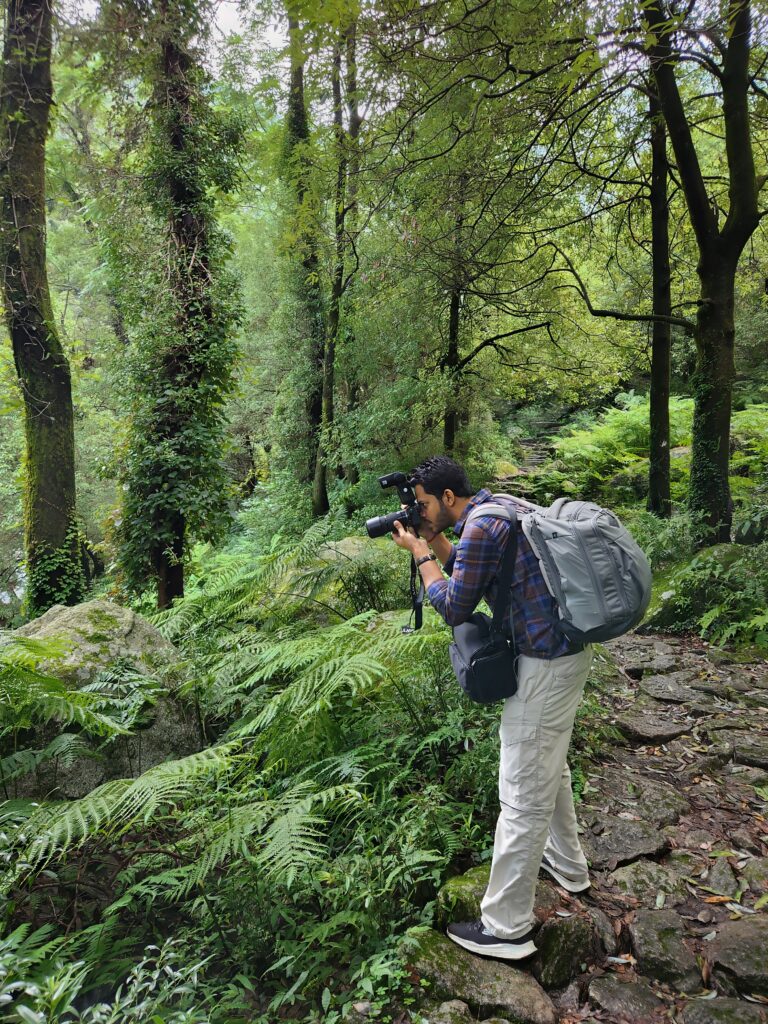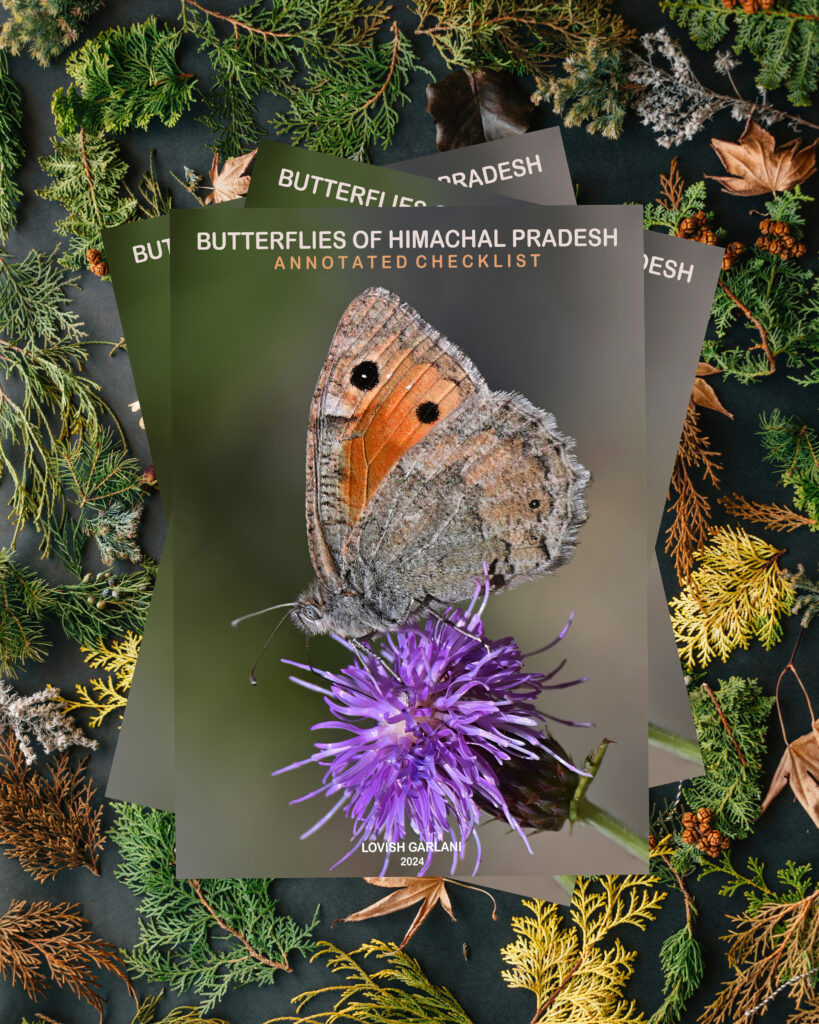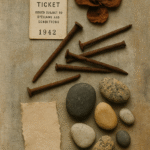Wings in Himachal: Lovish Garlani on Butterfly Ecology
The Cultural Legacy of Butterflies in the Himalayas
Long before science trained its lens on butterflies, these winged wonders danced through the worlds of poetry, painting, and folklore—symbols of transformation, beauty, and fleeting joy. In Himalayan oral traditions, they embodied the soul’s journey; in classical art and literature, they fluttered through metaphors of love, resurrection, and hope. Naturalists during the colonial era sought to pin them down in catalogues, but their mystery always remained airborne. Today, this legacy continues through the work of a butterfly researcher in Himachal Pradesh whose journey through the region’s fragile ecosystems is both personal and planetary. His fieldwork—chronicled across two books—documents rare and threatened species that inhabit these high-altitude landscapes. Yet beyond taxonomy, his work reflects a deeper truth: that butterflies are not just scientific data points, but vital threads in the ecological and cultural fabric of the Himalayas. This blog traces his story and the butterflies’—where science, spirit, and survival converge on luminous wings.
A Painter Meets a Naturalist
My fascination with butterflies began not in a lab but on canvas. For years, they have fluttered through my paintings as silent symbols of fragility, transformation, and light. It was during one of my habitual scrolls through social media that I first encountered the work of Lovish Garlani, a butterfly researcher based in Himachal Pradesh. His posts, filled with rare sightings and vivid documentation, caught my eye—and soon, his name kept appearing in scientific circles and even in the news for having discovered a rare species in the Himalayan region.
I ordered his books, eager to explore the science behind what I had always seen as poetry in motion. What followed was a long conversation, a carefully curated questionnaire, and an unexpected kinship built on wings and wonder. This article is the result of that dialogue—a journey into the high-altitude world of Himalayan butterflies through the eyes of a devoted researcher.

As I spoke to Lovish Garlani, I was struck not only by his passion for butterfly conservation but also by the quiet urgency with which he described changing Himalayan ecologies. What follows is a brief excerpt from our conversation, which felt more like a slow walk through a mountain trail than a formal interview.
The Ecological Importance of Butterflies
Deepika: What ecological roles do butterflies play that most people may not be aware of?
Lovish: Butterflies serve several vital ecological functions that often go unnoticed. While bees are commonly recognized as key pollinators, butterflies also pollinate a wide range of wildflowers, medicinal plants, and horticultural crops.
Throughout their life cycle—from caterpillar to adult—butterflies provide an essential food source for birds, bats, spiders, and other insects. Their sensitivity to climate, habitat changes, and pollution makes them valuable bioindicators for scientists studying ecosystem health.
Although caterpillars feed on specific host plants, which may appear harmful, this activity actually helps regulate plant growth. In moderation, it contributes to natural pruning, encouraging healthier and more resilient vegetation.
Pollination and the Himalayan Flora
Deepika: In your observation, how do butterflies contribute to pollination in the Himalayan flora?
Lovish: Butterflies play a crucial role in pollinating both medicinal plants and horticultural crops, particularly in mountainous regions like Himachal Pradesh. In this area, where horticulture significantly supports the local economy, butterflies act as natural pollinators, sustaining fruit-bearing plants and flowering vegetation.
Their presence is especially important in the fragile Himalayan ecosystem, where they help maintain biodiversity and ecological balance. By supporting plant reproduction in high-altitude environments, butterflies contribute both to environmental health and the livelihoods of local communities.
Butterfly Species as Ecological Indicators
Deepika: Can you share examples of butterfly species that serve as indicators of environmental health?
Lovish:
- Danaid Eggfly (HypoDanaid Eggfly (Hypolimnas misippus) – Frequently used in urban ecological studies, its abundance or scarcity helps assess the impact of urbanisation and habitat loss.
Apollo Butterflies (Parnassius spp.) – Found in alpine regions, these species are particularly vulnerable to climate change and habitat fragmentation. Their presence reflects the stability and health of high-altitude ecosystems.
Polyommatus species are sensitive to changes in grassland management and habitat quality. A decline in its population often indicates habitat degradation.
Shifts in Populations and Climate Change
Deepika: Have you noticed any patterns in butterfly populations that reflect changes in the ecosystem, such as climate shifts or habitat loss?
Lovish: Yes, there has been a noticeable decline in butterfly populations over the past few years. Species once commonly seen have now become rare. In mountainous regions, many butterflies have shifted to higher altitudes—a clear indicator of rising temperatures and climate change.
Additionally, some species are emerging earlier in the spring than in previous decades. These changes in behavior and distribution reflect broader ecological shifts, including habitat loss and altered seasonal rhythms.
Predators in the Himalayan Food Web
Deepika: What are the most common predators of butterflies in this region, and how do they fit into the local food web?
Lovish: In Himalayan and similar forested or hilly ecosystems—such as those in Himachal Pradesh—butterflies face predation from a variety of species, each playing a distinct role in the local food web. Insectivorous birds such as drongos, tits, bulbuls, and warblers are among the top predators of butterflies. Birds often feed on both adult butterflies and larvae (caterpillars), especially during breeding seasons when protein demands are high.
Some ants attack butterfly eggs, caterpillars, and pupae, especially those that are exposed or unprotected. Parasitic wasps lay eggs inside caterpillars; the developing larvae feed internally, controlling caterpillar overpopulation and contributing to natural pest regulation. Some spiders and reptiles are among the other predators of butterflies.
Biodiversity in Himachal Pradesh
Deepika: What makes the Himalayan region, and Himachal Pradesh in particular, a significant zone for butterfly biodiversity?
Lovish: Himachal Pradesh’s altitudinal range—from 350 to over 6,000 meters—creates a mosaic of microclimates. This enables rich butterfly diversity, from tropical species in lower valleys to cold-adapted species in alpine zones. The region’s climatic layering supports prolonged flowering seasons and, in some cases, multiple butterfly generations annually.
Endemic and Endangered Butterflies
Deepika: Are there any endemic or endangered butterfly species found only in this region?
Lovish: Yes, several species are endemic to the Western Himalayas:
- Regal Apollo: Rare and region-specific.
- Spiti Rockbrown (Pseudochazara baldiva): Found only in the Spiti region.
- Mountain Tortoiseshell (Aglais rizana): A high-altitude Himalayan species.
These species are highly vulnerable due to their narrow geographic range and the threats posed by climate change.
Threats to Butterfly Habitats
Deepika: What are the major threats to butterfly habitats in the Himalayas today?
Lovish: Major threats include:
- Agrochemical use: Destroys caterpillars and host plants.
- Forest fires: Devastate vital habitats.
- Urbanization and infrastructure development: Lead to fragmentation.
- Changing rainfall patterns: Disrupt plant and butterfly cycles.
- Unregulated tourism: Causes pollution and habitat degradation.
These issues call for immediate, region-specific conservation strategies.
A Day in the Life of a Butterfly Researcher
Deepika: Could you describe your typical day in the field while studying these species?
Lovish: Fieldwork begins at sunrise. After checking weather conditions, I carry a camera, notebook, lenses, and ID guides. Depending on the target species, I visit alpine meadows, river patches, or forest edges.
Midday is most active for butterflies, ideal for observing feeding, mating, or mud-puddling behavior. I meticulously document every sighting—altitude, plant use, weather, and more. Searching for eggs or pupae on host plants is equally vital.
Every day offers something new: a rare species, a behavioral insight, or a rediscovery—reminding me that butterfly research is not just observation, but immersion.

Turning Fieldwork into Books
Deepika: You’ve authored two books—what was the most challenging and rewarding part of compiling your research into written form?
Lovish: Creating Butterflies of Himachal Pradesh – Annotated Checklist began in 2015. The lack of a complete reference guide made compiling a verified checklist the first step. The project demanded rigorous cross-referencing of research, articles, and my own data—taking over a year. The checklist was later peer-reviewed and published to ensure scientific integrity.
The most rewarding part was filling a long-standing research gap, creating a resource for scientists and enthusiasts alike.

Science Meets Storytelling
Deepika: Do your books focus more on taxonomy or do they also explore the cultural and ecological narratives of butterflies?
Lovish: Both books serve different purposes—bridging science and storytelling.
- First book: Taxonomic, targeting researchers with verified species records and annotations.
- Second book (Butterflies of the Bhattiyat Forest Range): Photographic and accessible, aimed at broader audiences. Co-authored with forest officer Sanjeev Kumar, it’s the first of its kind from any forest range in the state.
Butterflies and Artistic Symbolism
Deepika: Butterflies have long fascinated artists. Do you see a connection between your scientific work and the artistic, symbolic value of butterflies?
Lovish: Absolutely. While rooted in taxonomy and conservation, my work often feels like capturing living art. Butterflies are emblems of movement, transformation, and beauty. Their symbolic power enriches both my scientific and aesthetic understanding of the natural world.
Folk Beliefs Around Butterflies
Deepika: Have you encountered any local folk tales, myths, or beliefs around butterflies during your research?
Lovish: Yes. In some Himalayan traditions, spotting a bright butterfly early in the morning is seen as a sign of good luck or the arrival of good news. These stories reflect an age-old human connection to butterflies as bearers of hope.
Education and Collaboration
Deepika: Do you collaborate with artists, educators, or conservationists to broaden public engagement with butterfly ecology?
Lovish: Yes, I work with researchers on biodiversity projects and help set up butterfly gardens in schools. These gardens provide hands-on ecological education for students and act as habitats for local species—fostering both awareness and conservation.
Community Involvement in Conservation
Deepika: What steps can local communities take to protect butterfly populations in Himachal?
Lovish:
- Avoid clearing habitats like forests and grasslands.
- Encourage native plants around homes and farms.
- Build butterfly gardens in schools and communities.
- Join butterfly surveys and citizen science projects.
- Promote eco-tourism that supports biodiversity.
Education—especially for children—is the key to lasting conservation.
Policy Gaps and Insect Conservation in India
Deepika: Do you believe there’s enough policy support for conserving insect biodiversity in India?
Lovish: Not yet. Though India is part of the Convention on Biological Diversity and has a National Biodiversity Action Plan, insect conservation remains underrepresented. Government attention is mostly focused on larger fauna.
There is a pressing need for dedicated funding, research programs, and enforceable policies that prioritize insects like butterflies as vital to our ecological future.
Integrating Butterfly Ecology into Education
Deepika: How can educational institutions better incorporate butterfly ecology into curricula?
Lovish:
- Create butterfly gardens for experiential learning.
- Establish nature clubs for surveys, awareness drives, and competitions.
- Include butterfly-related research in internships and dissertations.
- Invite researchers and forest officials for talks and workshops.
Campuses can become living classrooms for Himalayan butterfly ecology.
Getting Started with Butterfly Watching
Deepika: If someone wanted to start documenting butterflies in their backyard or community, where should they begin?
Lovish: Begin on a sunny morning. Observe flowering plants and note behaviors like feeding or basking. Record the time, location, and plant species. Use a camera for identification. Over time, patterns emerge—turning casual interest into meaningful ecological observation.
Beginnings and Transformations
Deepika: What first drew you to the study of butterflies?
Lovish: My journey began in 2009–10, during bird walks with Dr. C. Abhinav. A photo of the Painted Lady butterfly from that period became my first step into a lifelong passion for these creatures.
The Impact of Butterflies on Perception
Deepika: Has your understanding of nature changed because of your close relationship with butterflies?
Lovish: Yes, deeply. Butterflies have taught me that everything in nature is connected. Even small changes—like shifts in season—have rippling effects. Conservation, I’ve learned, begins with care, attention, and observation.
Moments of Discovery
Deepika: What do you feel when you see a rare butterfly species after months of searching?
Lovish: It’s a mix of disbelief, joy, and reverence. Spotting the European Red Admiral in Dharamshala—India’s first recorded sighting—was unforgettable. These moments validate the persistence and passion required in fieldwork.
Rethinking Time
Deepika: Do you think butterflies have changed your way of seeing life, or even time?
Lovish: Absolutely. Their brief but radiant life cycles have reshaped how I understand time. They remind me to see time not just in minutes or years, but in rhythms, seasons, and transformations.
Further Readings:
- Butterflies of India – A Citizen Science Portal
👉 https://www.ifoundbutterflies.org/
Anchor text suggestion:
“The Butterflies of India portal serves as a vibrant repository of photographs and verified sightings, supporting both researchers and citizen scientists.”
- Zoological Survey of India – Lepidoptera Research
👉 https://zsi.gov.in/
Anchor text suggestion:
“The Zoological Survey of India provides official data and studies on Lepidoptera species, contributing to foundational taxonomy across regions like Himachal Pradesh.”
- IUCN Red List – Global Conservation Status
👉 https://www.iucnredlist.org/
Anchor text suggestion:
“Species like the Apollo butterflies are monitored through the IUCN Red List, which tracks threatened biodiversity worldwide.”
Also Read on BlogOpine
“https://blogopine.com/textile-storytelling-in-womens-history/Threads of Memory: Textile Storytelling in Women’s History“
“Just as fabric holds the memory of generations, so too do butterflies mirror the legacy of ecosystems.”
“Surveillance in Public Space: Waiting, Watching, Being Watched”
“Our relationship with visibility—be it through observation or disappearance—can be as subtle as the flight of a butterfly.”

